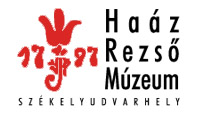Kovács Petronella (szerk.): Isis - Erdélyi magyar restaurátor füzetek 11. (Székelyudvarhely, 2011)
M-Kiss András: Egy elázott madágyűjtemény konzerválási problémái
inscription strip, the letters painted in the course of the last repainting have been replaced by cast metal letters. Tihamér A ndräs Metal objects conservator Muzeul Judeţean Mureş Târgu Mureş Phone:+40-743-111-046 E-mail: andrastihamer@yahoo.com András M-Kiss Conservation Problems of a Soaked Bird Collection Public collections normally provide secure protection for our cultural heritage. At times, however, events may occur which can ruin the work of long decades unexpectedly and in a short time. This is what happened in the Banate Museum (Muzeul Bănăţean) of Temesvár (now Timisoara, Rumania) on the evening of 22 June 2010, when a rainstorm caused the store-room of the bird collection to leak. The fibreglass insulation of the roof, renewed in 2006, filled with water and tore off the suspended ceiling, which fell on the cabinets. Their top and back panels got soaked, and water seeped through the stuffed birds which were kept in them. The museum’s bird collection was the largest, best conserved and preserved lot in East-Central Europe. It bears the name of its founder, Dionisie Linţia (1880-1952) deservedly. Linţia was trained in the Zoological Collection and Dermoplastic Laboratory of the Hungarian National Museum, Budapest, and was a corresponding member of the Hungarian Royal Institute of Ornithology. Between 1904 and 1918 he was in charge of the zoological collection of the South-Hungarian Society of Natural Sciences, based in Temesvár, then became director of the Banate Museum and later headed Department of Natural Sciences. Birds he prepared are found in several museums abroad, from Vienna to Hanover. His Birds of Rumania is still regarded a standard work. In 1937 he donated his private bird collection of 1300 items to the city of Temesvár. The collection now contains more than 2600 items. In consequence of the leak, the plumage and the false body of the birds became damp, and the sand, leaves, shells, etc. fastened to the bases with bone-glue started to come unstuck. The plumage and the base structures were cleaned with dry brush. For lack of adequate equipment, drying was ensured by continuous ventilation and the use of hair-dryer, which proved efficient. The cabinets were sprayed inside and outside with fungicidal liquid and left to dry in a draughty part of the corridor. A few days later, white mould spots appeared on the wet parts, and the same was observed on the plumage of some birds. The skin surface of the birds, which had been treated with arsenic, started to dissolve, and traces of re-crystallisation of the arsenic were also found on it. The iron wires used for the inner structures showed signs of corrosion. Our idea was to speed up drying the surfaces and disinfecting the fungus-infested parts with 100 per cent pure alcohol, but no funds were available for the purchase. Progressive treatment of the birds is still underway, as the high relative humidity inside the building renders the extermination of mould fungi with the method employed apparently impossible. In the absence of suitable staff and rooms, fumigation is unfeasible, and no information can be obtained on the reaction chemical agents currently available produce when applied to organic matter. In the situation that has evolved, we are led to believe that problems of conserving a wet-damaged bird collection are far more complex than we might think. This prompted a re-assessment of a series of problems we have had to contend with for years now - the necessity to develop appropriate storage conditions, to co-ordinate storage and research purposes, to guarantee security, to find methods of salvaging damped specimens and of cleaning, to create the possibility for chemical treatment, and to establish compatibility of materials used in stuffing. It has become clear that the staff is unprepared for tackling emergencies, which raises questions of complex training. The second floor of the building was once occupied by the Department of Natural Sciences. Today our display area has been reduced by over 60 per cent. We hope that the planned reconstruction of the Hunyadi Castle will enable the museum to regain its due status, setting an example for appropriate display, storage and preservation of exhibits. Functioning as an independent museum, the Department of Natural Sciences may get a new lease of life in a new building in which storage rooms, display areas, multimedia and interactive workrooms are fitted out up to modem standards, so, in our particular case, they could withstand catastrophes like that. In the absence of this, the preservation and conservation of the largest bird collection in Rumania, which also lends itself for comparative studies, remains a labour of love for a handful people. Dr. András M-Kiss Biologist Muzeul Banatului, Timişoara 300561 Timişoara, Str. Ofcea nr. 5 Phone: + 40-256-202-394 Mobil:+40-720-311-758 E-mail: andraskiss2000@yahoo.co.uk 196
